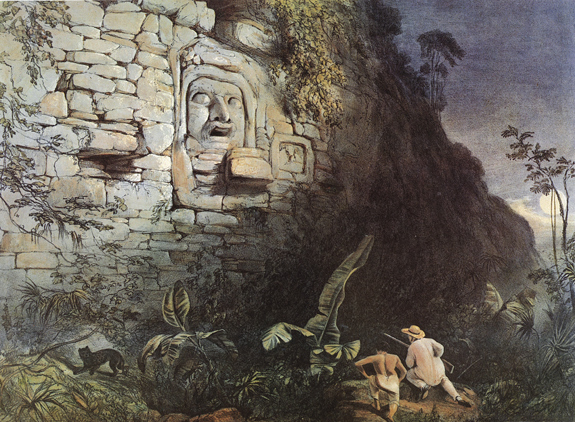
Drawing From the Past: Maya Antiquity Through the Eyes of Frederick Catherwood
Plate 25: Colossal Head, at Izamal
|
Plate 25, Colossal Head, at Izamal |
|
In this image of Izamal’s great pyramid, Kinich Kak Mo, the colossal head of a Maya figure looms high above the expedition’s naturalist, Dr. Samuel Cabot, Jr., and an unnamed Maya attendant. Catherwood’s palate of dark, mysterious colors, in contrast to his daylight prints, generates a lingering image. Catherwood carefully depicts the moon looking over the scene, as the colossal head of a Maya figure gapes at the intruders hunting a jaguar, an animal that represented several forms of ancient Maya gods. Catherwood’s highly romanticized illustration is one of the only Western records of the colossal head before it dropped to the ground. It may not be coincidental that Catherwood draws upon the importance of the moon and jaguars in this image. The moon’s phases formed one basis for the Maya calendar; and in Mesoamerica, the jaguar was one of the most feared yet respected animals, denoting power and authority. Moreover, Kinich Ahua, the sun god to whom this pyramid was dedicated, may have been linked to the jaguar when he made his nightly journey through the underworld. The Maya believed that four bacabs (sky-bearers) supported the thirteen layers of sky, but the jaguar was commonly associated with the underworld. [Spanish version]. MERCEDES PEPPER |

